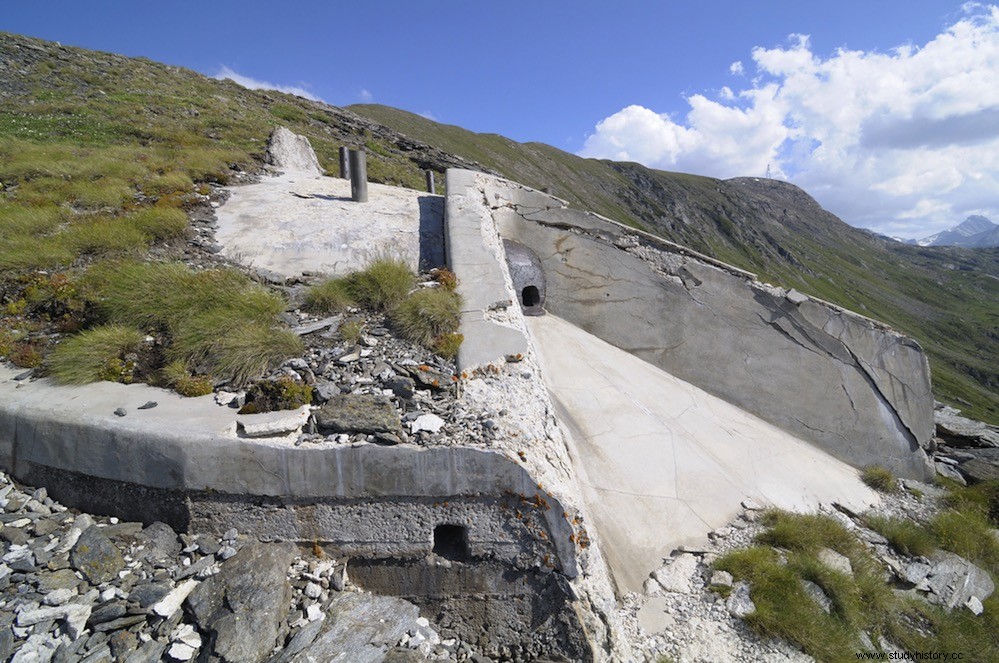Since ancient times, towns, cities and nations have built defensive walls, some as impressive as the Great Wall of China, Hadrian's Wall or the walls of Ston. More recently, the war conflicts of the 20th century in Europe left the continent dotted with border fortifications and defensive lines made up of bunkers, trenches, barbed wire and moats.
These include the Atlantic Wall built by the Germans, which runs along the entire western coast of France from the Spanish border, and continues through Belgium, Holland and Denmark until crossing into Norway. It is a mixture of large concrete structures and natural barriers that, as everyone knows, in the end was of little use against the push and determination of the allies.
Nor was the French Maginot Line, built between 1929 and 1938 to defend against a German invasion, very useful. Nor the impressive Czechoslovakian fortifications, begun in 1936 and never completed in time to prevent Hitler's annexation of the Sudetenland.

The Sigfried Line was the German defense opposite to the French Maginot, with more than 18,000 bunkers along 630 kilometers, built between 1938 and 1940. This would be a hard nut to crack for the Allied advance, resisting for about six months and causing heavy casualties to the enemy.
But perhaps one of the most spectacular fortifications, due to its location, is the Alpine Wall built by Italy along 1,851 kilometers of its northern border, from the beginning of the border with France in the Mediterranean, through the border with Switzerland and Austria, until reaching the Adriatic and the border with the former Yugoslavia.

Although almost the entire area has the impressive natural defense of the Alps, Mussolini ordered the construction of the fortifications, which would begin in 1931, placing bunkers and observation posts in the most vulnerable and accessible passes, forming a continuum with the high peaks and geographical features.
Huge bunkers were carved into the rock of the mountains, protecting the passes through which an enemy army would have to pass in case of invasion.
The objective, obviously, was to defend Italy from a possible French or Yugoslav invasion, but Mussolini also feared German ambitions over the Italian province of Bolzano (better known as South Tyrol), whose inhabitants were mainly of German origin. Even today, 70 percent of Bolzano's population speaks German, compared to 25 percent of Italian speakers.

The construction of the Alpine Wall lasted 11 years until 1942. In total, 208 structures were built, equipped with 647 machine guns and 50 artillery pieces, mixing modern weapons with other old ones from the First World War.
All the fortifications were camouflaged, as far as possible, so that they blend in with the stone environment. They had tunnels and galleries that connected them underground, protected with anti-gas doors, as well as alternative escape routes. A system of cable cars allowed communications between the different posts, and the shipment of provisions.

Those in charge of defending the wall were the 21,000 members of the She Border Guard , a special corps within the Italian army created in 1937, specifically trained for combat in high mountains.
But despite Italian efforts, the Alpine Wall did not help much. The Allied invasion came through Sicily, rather than through the Alps, and the Germans also did not need to cross it to take control and restore Mussolini to power in September 1943.
At the end of World War II some of the fortifications in the western part were demolished, while in the eastern part they remained in territory occupied by Yugoslavia and today they are in Slovenian territory.

Interestingly, the construction of the Alpine Wall caused the Yugoslavs to also start their own defensive fortification, the Rupnik Line, in 1937, which runs parallel to the Alpine Wall. However, the completion date of the work was set in 1947, so when the Axis armored vehicles crossed it in 1941 it immediately collapsed.
The Alpine Wall was revived during the Cold War with Italy's entry into NATO. A new line of cannon-armed turrets was built from the Austrian border to the Adriatic and remained in service until the early 1990s. In 1992 the bunkers and other structures were abandoned and permanently sealed.
